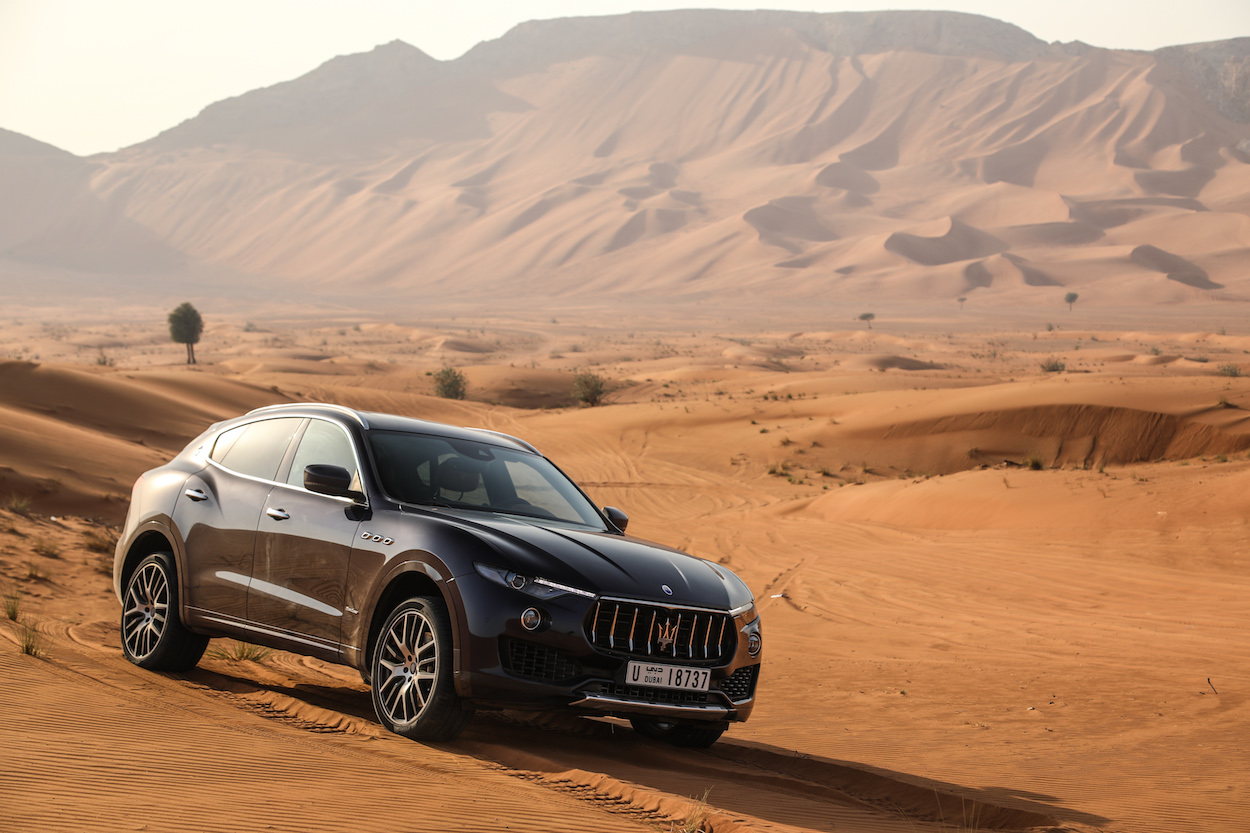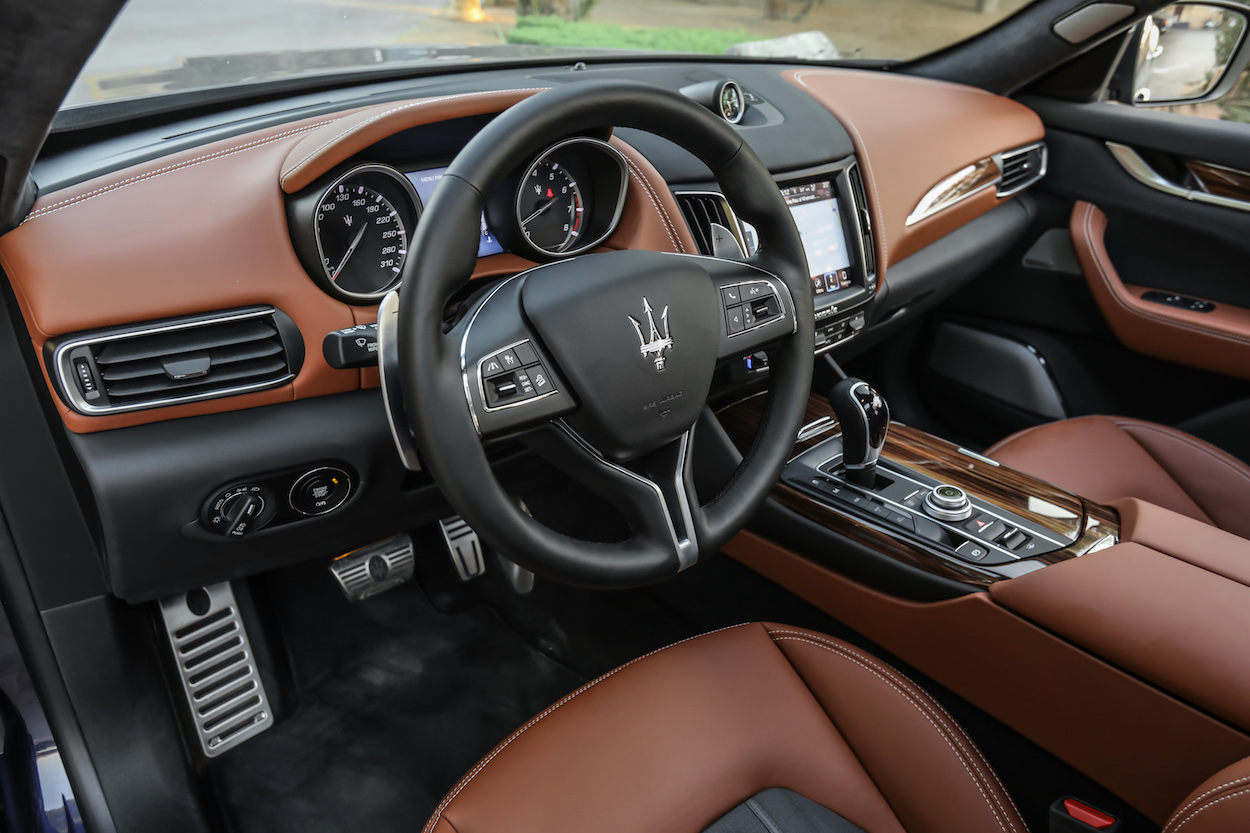Against the backdrop of the Sharjah Desert in the U.A.E, a radiant blue Maserati Levante glides across the saffron dunes like a preening model on set of an exotic photoshoot. I’m in the Persian Gulf for the debut of 2018 Levante MY18, the second generation of the 103-year-old Italian carmaker’s first-ever SUV. Aesthetically, the far-flung setting is the perfect catwalk for a car with a strong sartorial DNA—the interiors are custom fitted by Ermenegildo Zegna, with hand-stitched silk seating and trimmings, and the curvaceous silhouette is reminiscent of a coupé—though its performance in such an environment is what proves most impressive. Since the unveiling last year, Levante, named for the gale-force Mediterranean winds that gust through the Strait of Gibraltar, has earned high marks for both style and design, but not at the expense of power. The 3.0-liter, twin-turbo V6 engine comes by way of Maranello, Italy, where it’s manufactured by Ferrari. For its second act, Maserati installed a new range of technology upgrades such as a state-of-the art infotainment system and adaptive cruise control that introduces elements of automation. It feels almost sinful taking one into a landscape so severe that even the Arabian camels seek refuge from the relentless heat under the shade of power-line towers. Positioned in off-road mode, one of six driving settings, including sport and I.C.E. (“increased control and efficiency”), it was quickly apparent that Levante has brawn behind its beauty. “Maserati is one of the few brands where sportiness plays with elegance,” says chief exterior designer Giovanni Ribotta. From the brand’s design center in Turin, Ribotta delved into the design, technology, and performance behind Levante 2.0.
What are the hallmarks of Italian design that show up in the Levante?
We tend to describe Italian design in three words: elegance, harmony, and purity. The elegance and purity is proportion and the shape of our car. Italian design is always balance, aesthetic elements with functionality. Personality is something in our DNA. From the design point of view, try for that “wow” effect. The importance of the Italian designers of the past like Pininfarina, Giugiaro, Bertone is the craftsmanship and the art movement—that is Italian design.
Why did you task Zegna with designing the interiors?
The core of the Maserati brand is the driver experience.We started the collaboration with Zegna to celebrate the centennial in 2014. It’s a unique offer in the market because of the exclusivity and customization of the premium Italian leather. Zegna appears in the seats, the door panel, the seaming, and sun visor. The richness of the material gives the sensation of a living room.



